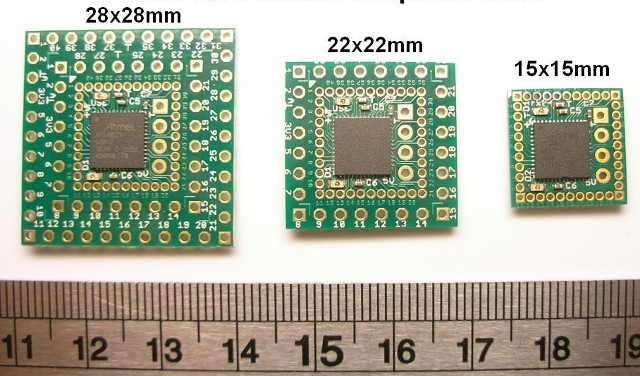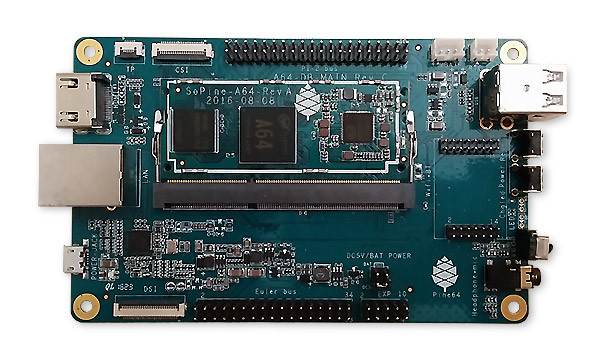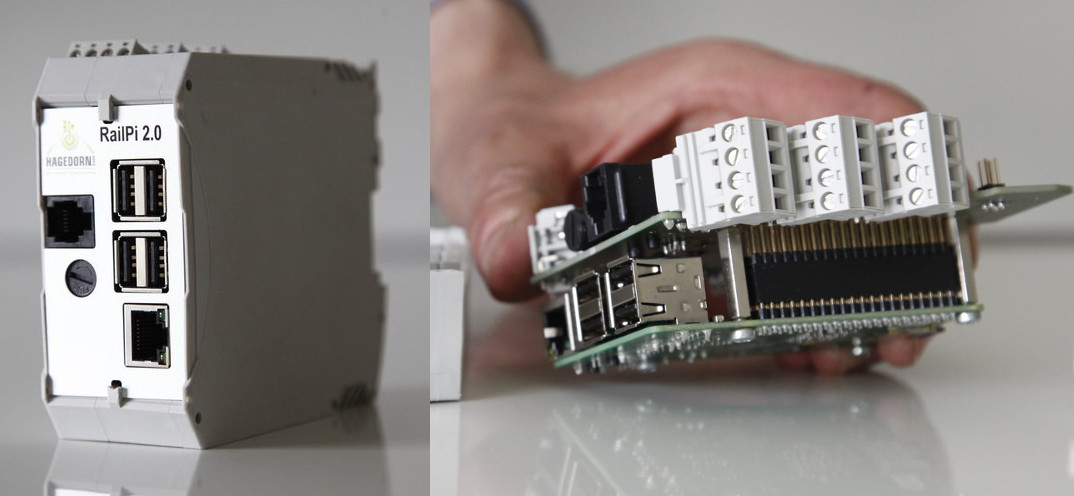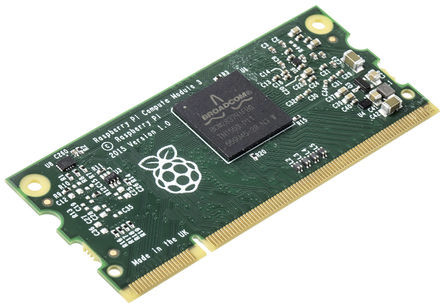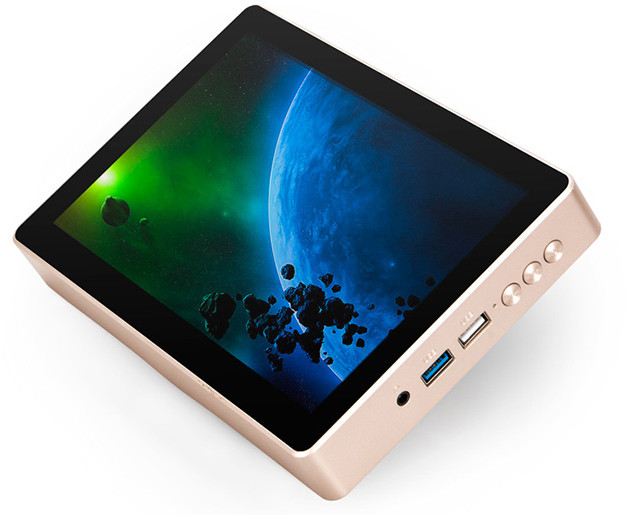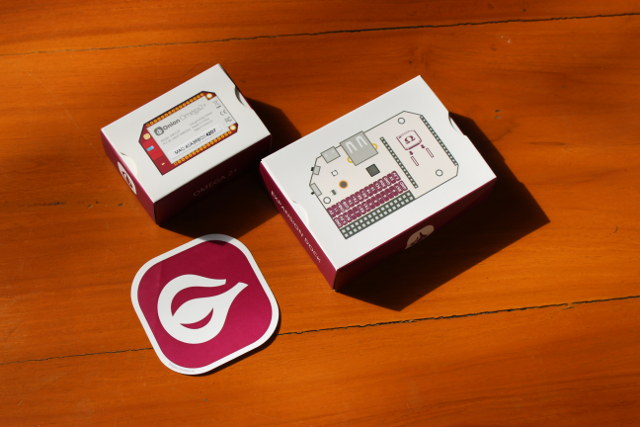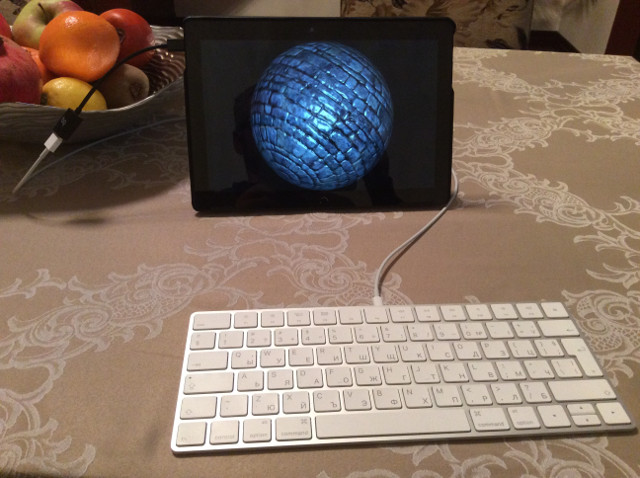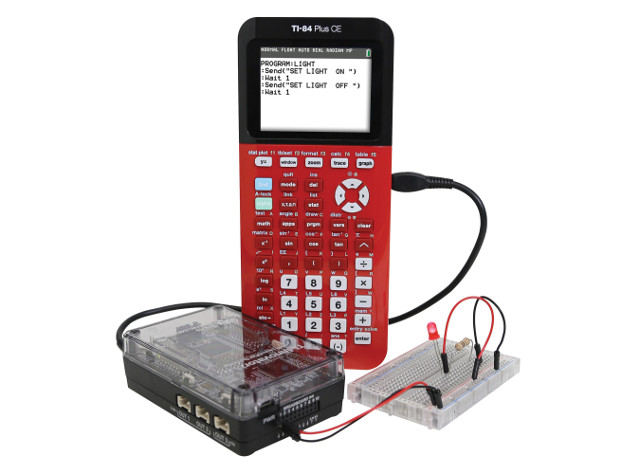Arduino Zero is an official Arduino board based on UNO r3 form factor but using Atmel SAMD21G18 ARM Cortex M0+ MCU instead of an AVR MCU. Albert van Dalen has decided to design a compatible module based on the same MCU, and called SAM 15×15, as its size can be trimmed down to as low as 15×15 mm. SAM 15×15 comparison with Arduino Zero and Uno boards. SAM 15×15 Arduino Zero Arduino Uno Microcontroller ATSAMD21G18A ATSAMD21G18A ATmega328P Digital I/O Pins digitalWrite digitalRead 34 20 14 Analog Output Pins (PWM) analogWrite 24 10 6 Analog Input Pins (ADC) analogRead 14 6 6 ADC resolution 12-bit 12-bit 10-bit 10-bit DACs 1 1 0 Flash Memory 256KB 256KB 32KB SRAM 32KB 32KB 2KB EEPROM 32KB (emulated in Flash) 32KB (emulated in Flash) 1KB CPU Speed 48MHz 48MHz 16MHz The board allows for three form factors to match your specific needs: 28 x 28mm […]
PINE64 Introduces SOPINE A64 Allwinner A64 SoM and SOPINE “Model A” Baseboard
Following yesterday’s Raspberry Pi Compute Module 3 launch, we have a new development board turned into system-on-module (SoM) today with PINE64 launching SOPINE A64 SO-DIMM module based on Allwinner A64 processor with 2GB RAM together with SOPINE “Model A” baseboard. SOPINE A64 CPU module specifications: SoC – Allwinner A64 quad core Cortex A53 processor @ 1.2 GHz with Mali-400MP2 GPU System Memory – 2GB LPDDR3 Storage – 128 Mbit SPI flash, micro SD slot (on the back) I/Os via 204-pin SO-DIMM edge connector Video Output / Display – HDMI + CEC, MIPI DSI Audio – I2S, HP, headphone, microphone 2x USB 1x Gigabit Ethernet (RGMII) UART, I2C, PWM, GPIOs, etc… Power Supply – AXP803 PMIC Dimensions – 67.9 x 31.0 mm (DDR3 SO-DIMM form factor) SOPINE A64 will basically run the same firmware as used for PINE A64+ development board, except for some modifications for LPDDR3 RAM support. Support operating […]
RailPi 2.0 DIN Rail Enclosure & Industrial Expansion Board is Designed for Raspberry Pi 3 & ODROID-C2 Boards
We’ve already seen the Raspberry Pi compute module used for industrial applications with RevolutionPi RevPi Core industrial computer with a DIN rail enclosure, support for digital I/O modules and fieldbus gateways. Hagedorn Software Engineering GmbH, another German company has designed a similar industrial computer, called RailPi 2.0, with a DIN rail enclosure integrating an add-on board designed for Raspberry Pi 3 and ODROID-C2 boards. RailPi 2.0 specifications (adapted from Google Translation of website): I/Os 4x digital outputs, short-circuit-proof, PWM-compatible, with diode for the connection of inductive loads such as relays. 2x optically decoupled inputs, current-limited, with dimensions compliant with the S0 standard to allow them to be used with pules counters / current meters. RS485 interface 1-Wire bus placed at the front of the RailPi Bus connector for extensions with GND,I2C Clock (5V), I2C data (5V), 5V, and 12V Misc – Real-time clock Power Supply – Input voltage range of […]
Raspberry Pi 3 Compute Modules CM3 and CM3L Launched for $30 and $25
We all knew Raspberry Pi Compute Module 3 were about to be launched soon, as the Raspberry Pi foundation announced a partnership with NEC displays last October, and the datasheet for two version of the Broadcom BCM2837 based system-on-module, CM3 and CM3L (Light), was released shortly after. The good news is that the modules have officially been launched for $30 and $25 for respectively Compute Module 3 with 4GB flash, and Compute Module 3 Light with the SD card signals exposed via the SO-DIMM connector. The foundation has also lowered the original compute module price to $25. Here are Compute Module 3 specifications as a reminder: SoC – Broadcom BCM2837 quad core Cortex A53 processor @ 1.2 GHz with Videocore IV GPU System Memory – 1GB LPDDR2 Storage CM3L – SD card signals through SO-DIMM connector CM3 – 4GB eMMC flash 200-pin edge connector with: 48x GPIO 2x I2C, 2x SPI, […]
GOLE1 Plus Windows 10 mini PC & Tablet Combo Coming Soon for Around $200
GOLE1 was product launched last year than combined a tablet and mini PCs functionalities into one product with a 5″ touchscreen, a battery, and all the ports you’d expect from a mini PC with USB, HDMI, etc… I reviewed an early GOLE1 sample running both Windows 10 and Android 5.1, and beside a battery charging problem due to its being one of the first sample, I found it was a product fun to play with, however, I could not really find a practical use case for it. The 5″ display is just to small to run Windows 10 comfortably, and it’s a bit heavy to use like a normal tablet. Maybe if you have an application that require a small display panel to control a large screen connected via HDMI, it’s different. I’ve been informed the company is about to launch a new version, called GOLE1 Plus, with a new […]
Getting Started with Onion Omega2+ LEDE WiFi IoT Board and Expansion Dock
Onion Omega2 LEDE (OpenWrt fork) WiFi board is powered by Mediatek MT7688 MIPS SoC, targets IoT projects, and sells for as low as $5. There are actually two versions: Omega2 with 64MB RAM, 16MB flash, and Omega2+ with 128MB RAM, 32MB flash and a micro SD slot. Onion sent me the latter for review, together with an expansion dock that allows powering up the board though USB , and adds a USB host port, an RGB LED, buttons, and access to GPIO via a female header. In this quick start guide, I’ll start by taking some unboxing pictures, and then report my experience following the documentation to configure the board, blink the RGB LED, and control a LED on a breadboard using a GPIO from the header. Onion Omega2+ Unboxing I received the two boards in their respective package, and which are both stored in anti-static bags. Let’s check Onion […]
Self-hosted OpenGL ES Development on Ubuntu Touch
Blu wrote BQ Aquaris M10 Ubuntu Edition review – from a developer’s perspective – last year, and now is back with a new post explaining how to develop and deploy OpenGL ES applications directly on the Ubuntu Touch tablet. Ever since I started using a BQ M10 for console apps development on the go I’ve been wanting to get something, well, flashier going on that tablet. Since I’m a graphics developer by trade and by heart, GLES was the next step on the Ubuntu Touch for me. This article is about writing, building and deploying GLES code on Ubuntu Touch itself, sans a desktop PC. Keep that in mind if some procedure seems unrefined or straight primitive to you – for one, I’m a primitive person, but some tools available on the desktop are, in my opinion, impractical on the Touch itself. That means no QtCreator today, nor Qt, for […]
TI Innovator Hub Connects MSP432 LaunchPad Board to TI Graphing Calculators
I remember when I was in high school we all had those TI calculators to cheat enhance our chances of passing exams, but Texas Instruments has now launched what it calls TI-Innovator Hub based on a MSP432 LaunchPad board that connects to some of their graphing calculators and allows student to program and control external hardware through their calculators. Innovator Hub hardware specifications: MSP-EXP432P401-ET TI LaunchPad Board 3x input ports, 3x output ports, I²C port Breadboard connector with 20 labeled pins USB Mini USB Port (DATA port for connection to a TI graphing calculator, or a computer running TI-Nspire CX software) Micro-USB port (POWER port to connect to external power source) Misc – Red LED, RGB LED, Light Brightness Sensor, and speaker Enclosure The hub can then be programmed using TI-84 Plus CE (TI Basic language) or TI-Nspire CX (Lua language) graphing calculators. It’s a bit like playing with Arduino […]


